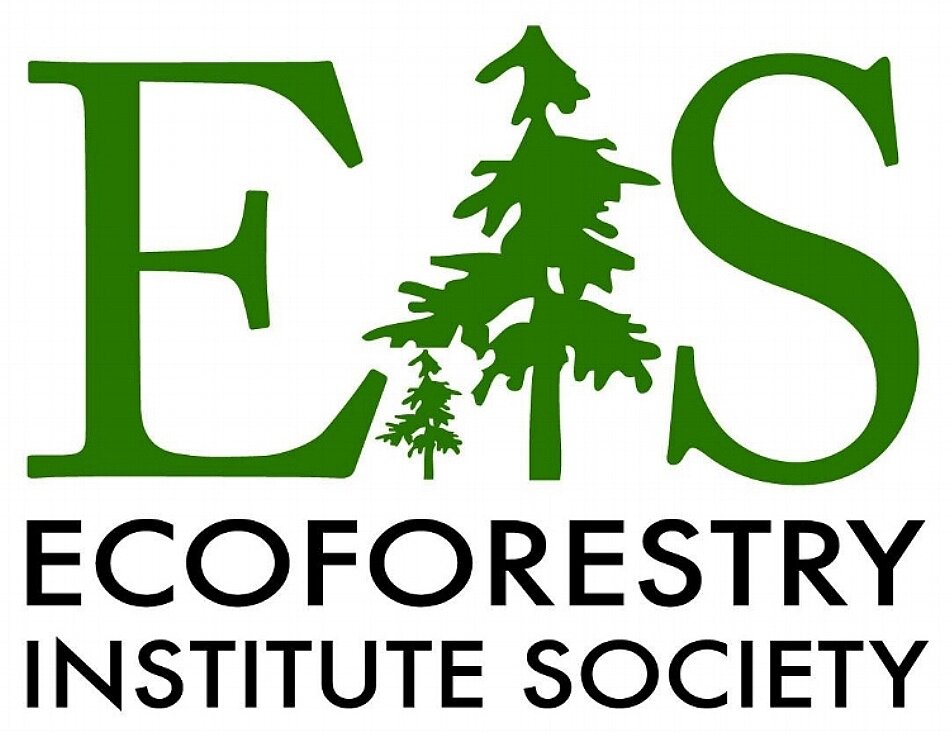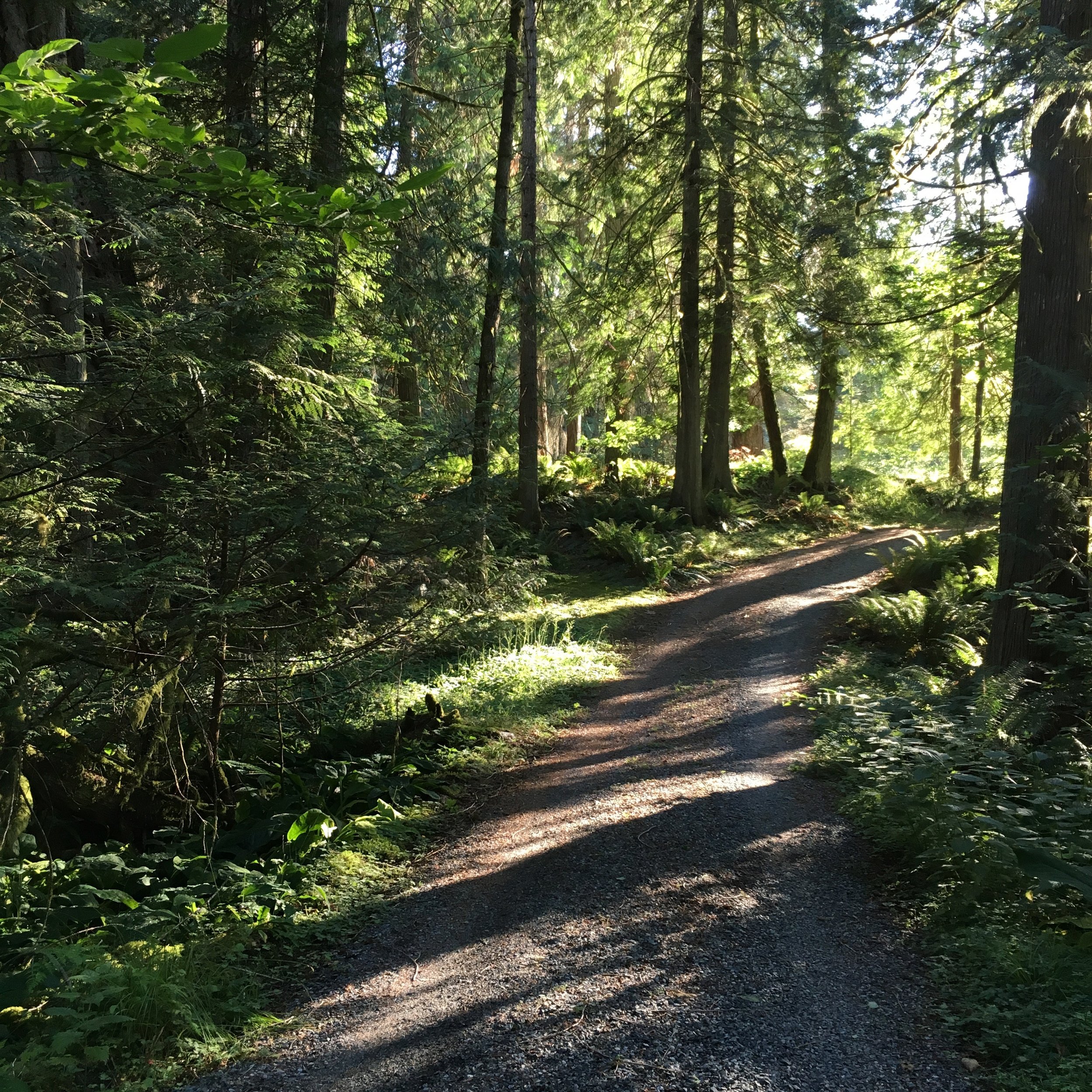What We Do
EIS has two primary mandates:
to promote the principles and practice of ecoforestry while honouring the legacy of Merv Wilkinson, the previous owner of Wildwood. As Trustees of Wildwood Ecoforest, we do this through the selective harvesting of trees as prescribed in our Management Plan. The wood is milled on the property and used for onsite construction and the production of value-added wood products.
to provide educational programming and opportunities for a wide range of audiences, from school children and students to seasoned professionals, academics, ecotourists and the general public.
Who We Are
The Ecoforestry Institute Society (EIS) is a registered nonprofit, charitable society comprised of a volunteer Board and a strong core of community volunteers. Together, we are dedicated to the principles and practices of ecoforestry – that is, demonstrating that we can harvest trees and plants from the forest while maintaining healthy and integrated ecological systems.
We place value on the services provided by nature such as the provision of the air that we breathe, hydrological systems that filter and distribute water, carbon sequestration, the nutrients that feed the forest through natural decaying processes, and wildlife habitat.
We believe it is essential to work within the capacity of nature, and that we can develop a viable economic framework built on the stewardship of an ecologically sound forest. Economic value can be gained through the production of value-added wood goods and services, educational programming, ecotourism and related activities.
EIS is the Trustee of Wildwood Ecoforest and holds the property on behalf of the people of British Columbia.
Origins
EIS grew out of a movement in the mid-1990’s as a number of academics from the University of Victoria and local environmentalists sought a better way to manage our rapidly depleting ecosystems. Founders include well-known luminaries:
Dr. Alan Drengson (contributor to the deep ecology movement and UVic Emeritus Professor of Philosophy);
Dr. Duncan Taylor (contributor to the deep ecology movement and UVic Professor of Environmental Studies);
Dr. Nancy Turner (ethnobotanist and UVic Emeritus Professor); and
Sharon Chow (Sierra Club Director for 20 years).
Merv Wilkinson himself was to become a member and was later awarded for his pioneering work in ecoforestry with the Order of Canada and the Order of British Columbia. Learn more about Merv here.
Wildwood Protections
In November 2016, and after a three-year effort, EIS won a Supreme Court of British Columbia decision to acquire Wildwood Ecoforest. EIS is now the Trustee of Wildwood and holds it on behalf of the people of British Columbia.
Wildwood is operated under the terms of a Trust Deed. This deed was developed by Dr. Donovan Waters, Canada’s foremost trust lawyer, specifically for the protection of Wildwood and ensures that Wildwood can only ever be operated by a like-minded charitable society.
What We’ve Achieved
Nov. 2016 - Acquisition of Wildwood Ecoforest
Fall 2017 - First Timber Harvest
2018 Educational Programming - In 2018 we gave over 20 tours to groups ranging from elementary school classes to university groups, and individuals interested in ecoforestry, with local, national and international participants.
In October, we hosted a pit-cook for Wildwood friends, supporters and volunteers.
2018 Completion of the Homestead Restoration - a complete rebuild of electrical, mechanical, septic, water, insulation, and a range of energy efficiencies including solar. To enhance the experience at the Homestead we built two new decks and a dock that provides access to Quennell Lake. The Homestead is available for private rental accommodation, corporate retreats and special events. Click here for more information.
2019 saw the expansion of our Educational programs with the help of 6 new Nature Guides. Schools groups from all over the Island have come to Wildwood to learn about our biodiverse forest and management techniques.
Our Strategies for Old Growth Forests in BC
The main goal of an OG strategy should be to re-establish the abundant historic, natural distribution of OG. In other words: to grow OG again.
It requires a long-term commitment
Lower the AAC (annual allowable cut) gradually but steadily over a long period (i.e. 50 yrs) to get well on the way of achieving natural levels of OG again while giving the industry a chance to adapt
The goal is not total preservation of OG forests (except for ecological reserves), but a more natural age class profile in perpetuity (as natural disturbance regimes would produce it) and achieved by logging at a slower rate than today
This will deliver strongly towards the goals of:
biodiversity protection and restoration
climate change mitigation
fire resistance
reconciliation with our Indigenous relatives
human health
diversification of the economy (ecotourism etc.)
Over time, more valuable logs from OG harvesting will again be available
Set aside immediately at least 30% of the OG area which would naturally (close to historic level) exist per biogeoclimatic zone, subzone & variant. These areas are meant to be ecological reserves and “biodiversity lifeboats” and are to be excluded from any future logging; don’t substitute OG with OG recruitment areas for these “lifeboats” unless there is not enough OG remaining; any OG recruitment areas need to be chosen from mature forests first.
If not enough OG is available on public land, protect it on private land with financial incentives or purchase the Land to bring it back into public ownership.
When establishing these OG reserves, aim to establish connectivity at the same time.
Long-standing low impact OG management as practiced at Wildwood is exempt from the OG reserve and logging exclusion - the oldest trees will never be cut at Wildwood (except for danger trees) and will always be abundant throughout.
Since the 1940s Vancouver Island's Wildwood has been managed using Scanadinavian-inspired forestry principles that view a forest as more than just a stand of timber. — Filmed and produced by Daniel Pierce for The Narwhal


